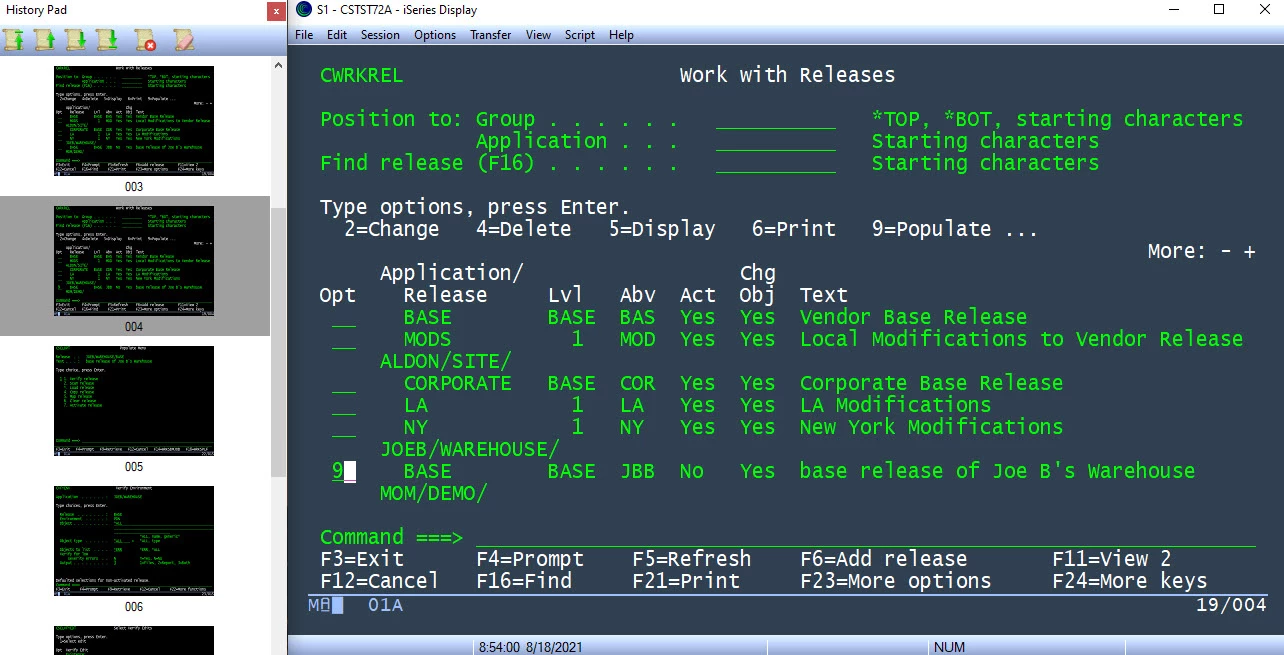When you activate this mode, TE will save a snapshot of each screen that you navigate through into a buffer. It even captures the options or commands that you type, (but unfortunately, not the F-keys). After you are done capturing, you can use TE to scroll through the historical screens to review them. There is also a handy feature in the print screens option to easily export the selected screens in various formats. That will come in very handy when I want to document a series of steps for another user, such as "Steps to run a release verification in LM(i)."
- To configure, or disable, the screen history feature, click and click the Screen History tab.
- To view the captured screens, click and click the Screen History tab.
- To print multiple screens, File. Select the screen you want to view, then click on the "camera" icon in the print window.
- From this dialog box you can print to a printer, save the output to a file of your choice, or email the output.
- Note that when you select the print option, you can select the printer you want, which includes physical printers as well as options like PDF and OneNote.
------------------------------
Joe Baumgarten
Senior CSE
Rocket Internal - All Brands
Ames IA United States
------------------------------





